World 🢖 Europe 🢖 Italy 🢖 Lombardia
Churches 🢔 Religious architecture 🢔 Architectural wonders 🢔 Categories of wonders
Wonder
Milan Cathedral
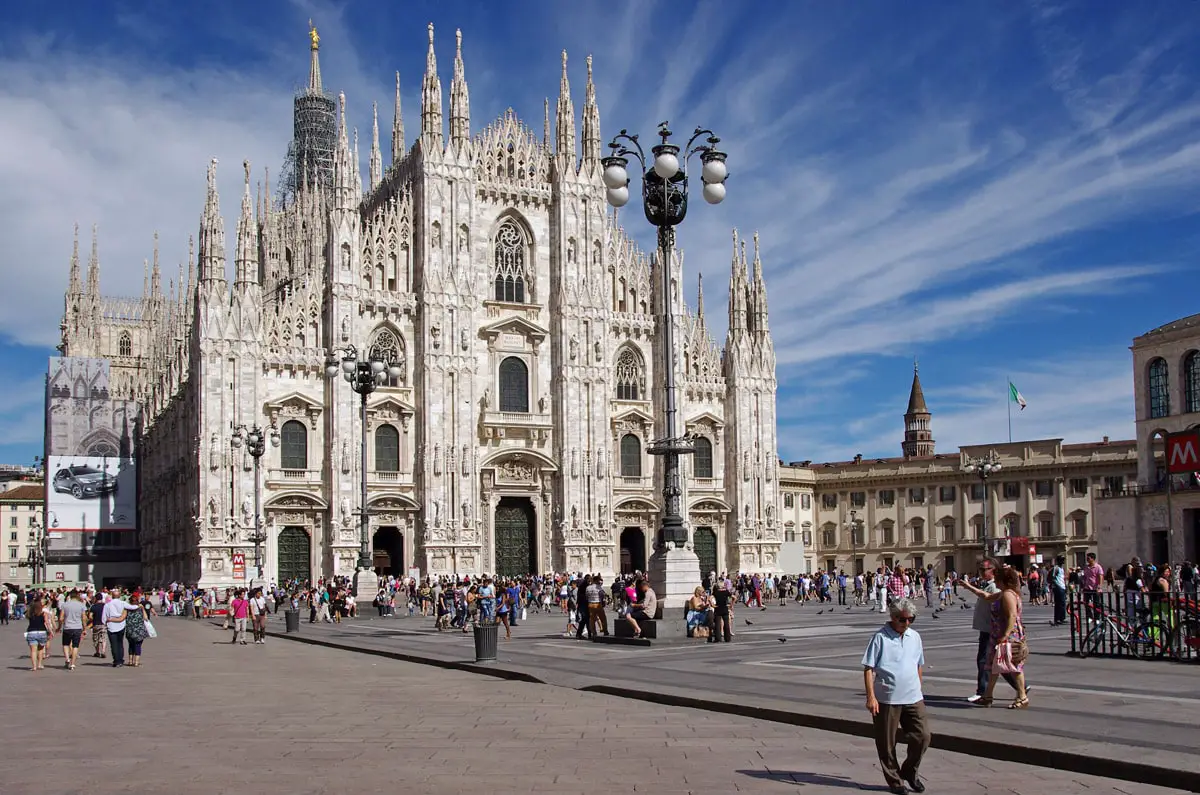
 In short
In short
One of the most beautiful buildings in the world and the second-largest Gothic cathedral in the world. Milan cathedral was constructed for 582 years from 1386 to 1965. Adorned with some 3,400 statues.
 71.7%
71.7%
GPS coordinates
Year of construction
Architectural style
Architects
Branch of Christianity
Height
Map of the sites
If you see this after your page is loaded completely, leafletJS files are missing.
 In detail
In detail
It took 582 years to build Milan Cathedral. The lives of many priests, architects, stonemasons were (and still are) devoted to this building. Now it is built: one of the most beautiful buildings in the world, enormous, white, ornate and unusual.
Construction history of Milan Cathedral
582 years is a very long time – thus the build history of Milan Cathedral is very complex and long.
Beginning
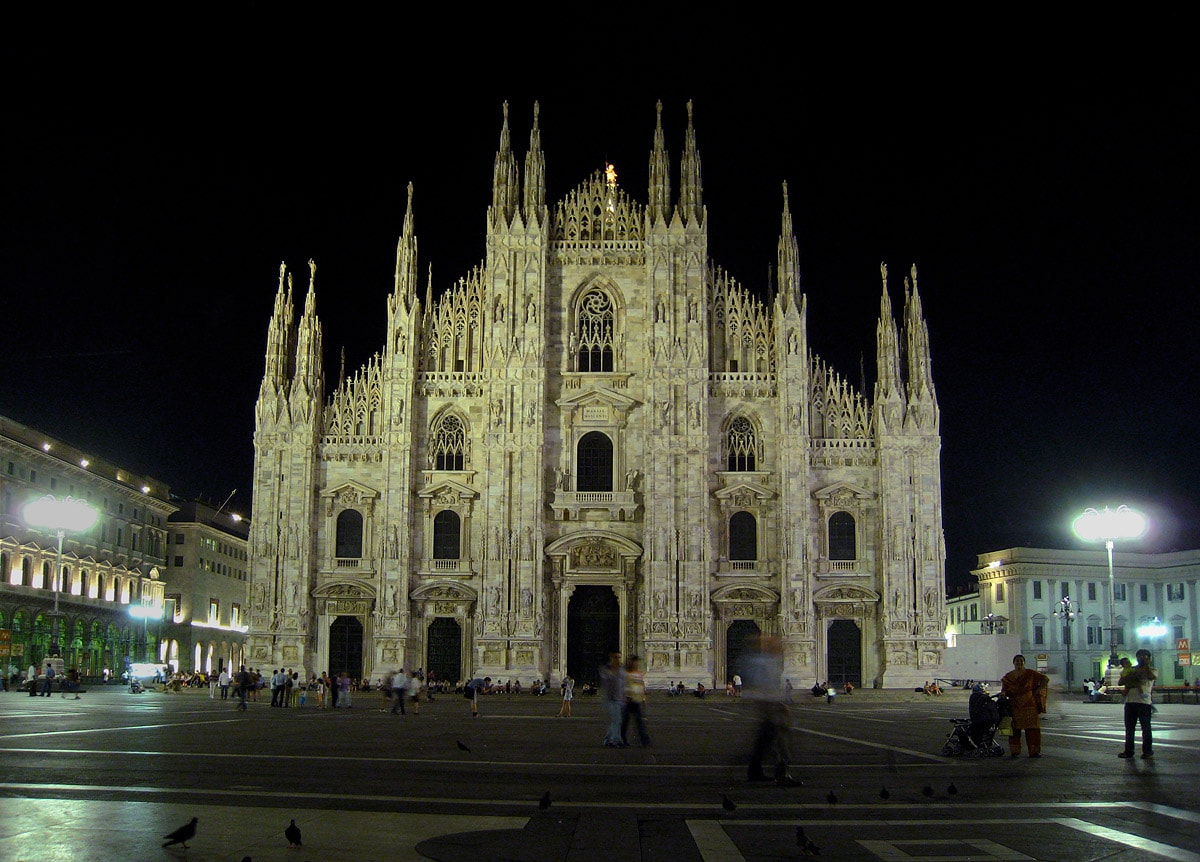
Cathedral is located in the center of an ancient street network. Thus it is well possible that already at Roman times here was located some shrine.
The first cathedral was built here by 355 AD – the cathedral of St. Maria Maggiore. In 836 Basilica of St. Tecla was built next to it.
In fact, Battistero Paleocristiano still can be visited under the Milan Cathedral. It is one more wonder of this place, one of the oldest Christian buildings in Europe, built by 355 AD. Most likely right here St. Ambrose baptized St. Augustine.
Both the cathedral and basilica were damaged by fire in 1075. Later the tower of the old cathedral collapsed. Authorities and citizens saw the need for a new cathedral.
The new ruler of Milan, Gian Galeazzo Visconti, and his cousin, Archbishop Antonio da Saluzzo used the possibility to prove that the new authorities of Milan are far better than the previous tyrant Barnabò. They started the construction of the new cathedral in 1386.
1386 – 1402: Lombardian architecture against French architecture
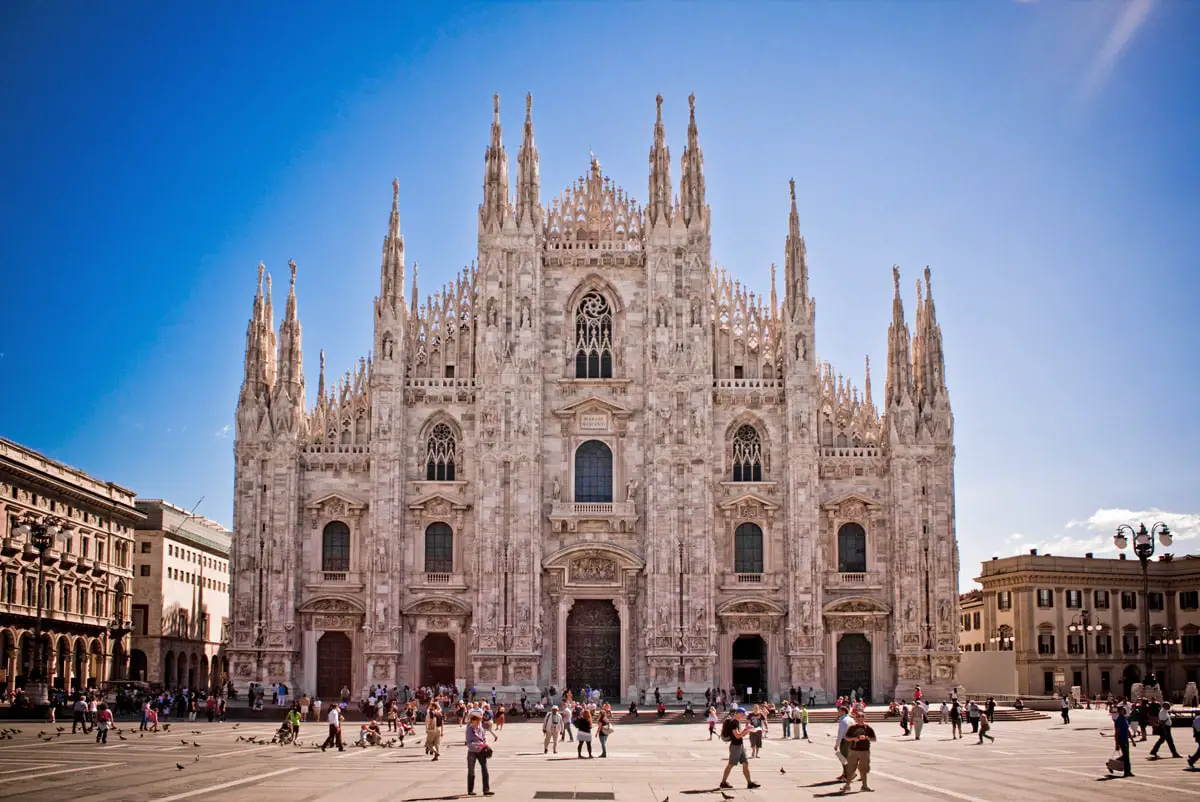
Initially, works were led by the Italian architect and engineer Simone da Orsenigo. Several large buildings were removed from the construction site and ambitious construction started. This activity was much supported among the citizens of Milan and a huge amount of donations was collected.
The old church of St. Maria Maggiore was used as a source of construction stone for the new church. Basilica of St. Tecla was standing longer – up to 1548.
Orsenigo planned to build the cathedral in Lombard Gothic style, from brick. Ambitions of Visconti were higher – he wanted to follow the newest trends in European arts and architecture.
French architect Nicolas de Bonaventure was invited to work in Milan in 1389. Bonaventure redesigned the cathedral to the French – Rayonnant Gothic style. He also decided that the brick building should be paneled with Candoglia marble.
This beautiful marble is nearly white, with a slight pink hue. The quarry is located in the Alps, northwest of Milan. This quarry is owned by the builders of Milan Cathedral up to this day.
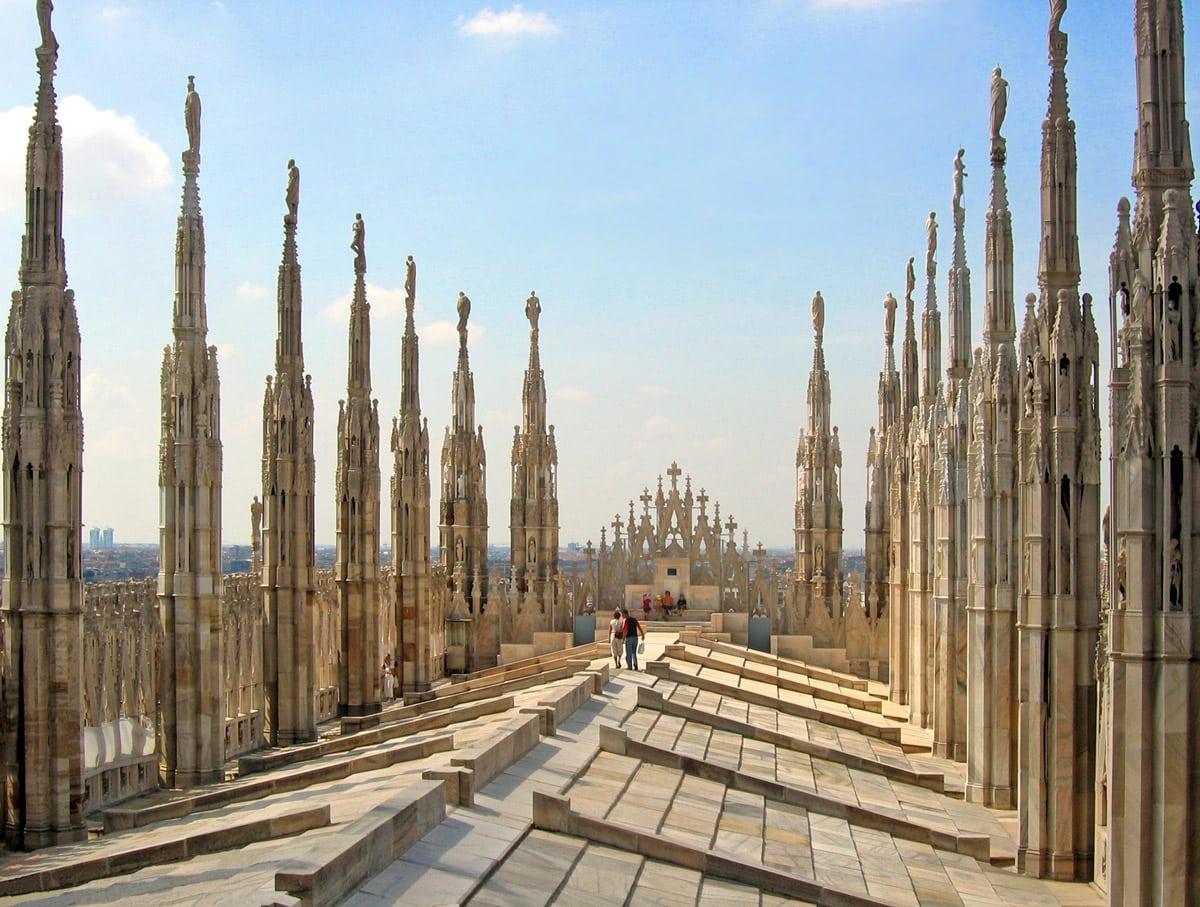
Works proceeded well, walls became higher and ten years later it was necessary to install special machinery to raise stones to a great height. Another French master – Jean Mignot – was invited sometimes around 1399. Mignot was very critical about the work done thus far and considered that the structure is close to collapse – what was not correct.
Many foreign architects were invited to assist in the construction of the cathedral – and experienced growing discontent of local Lombardian stonemasons. Workers were irritated by constant changes in ongoing works. Construction proceeded in a very tense atmosphere. Nevertheless, constant conflicts and hardship resulted in highly original work of high build quality.
When Galeazzo Visconti died in 1402, the cathedral was almost half-built. Works slowed down due to the lack of financing and incentive.
1402 – 1649: Renaissance or Baroque style?
Large-scale works resumed around 1480 – walls and roof of the building were built and sometimes around 1500 – 1510 the decoration of the interior was started.
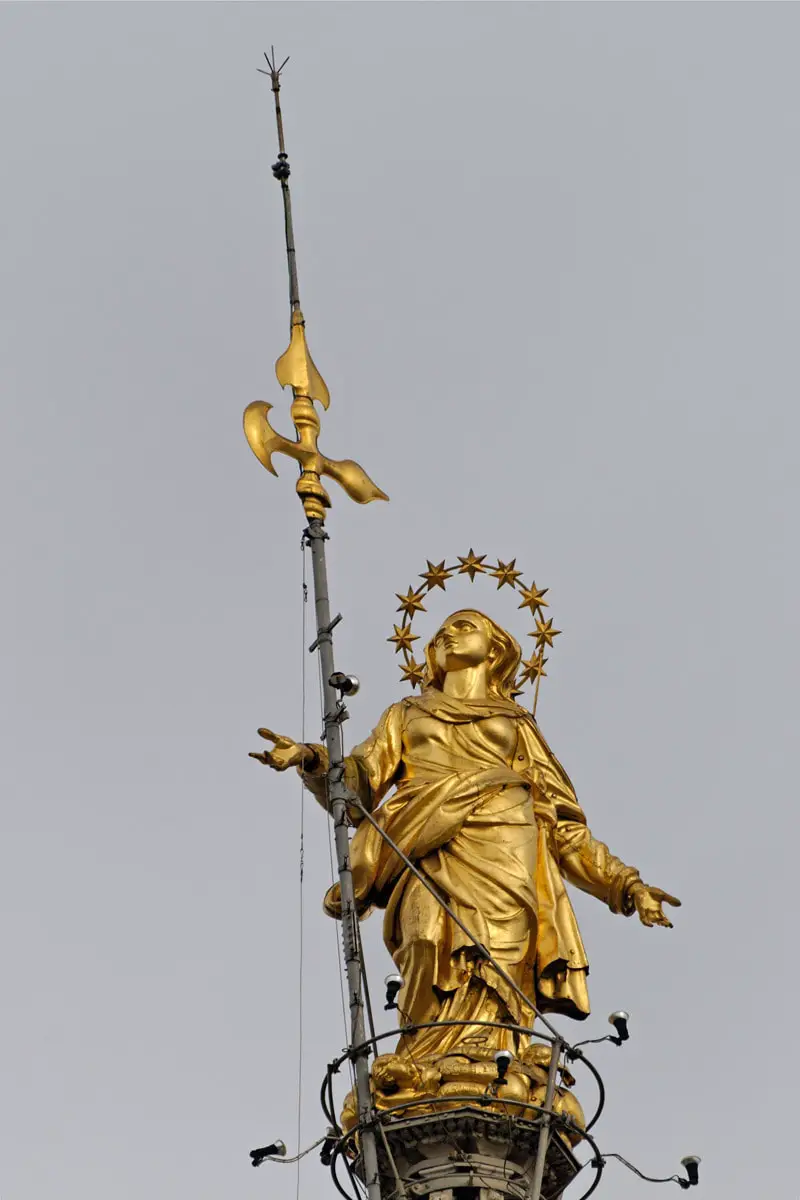
The exterior of Milan Cathedral for a long time remained plain, undecorated. Works slowed down after 1510, smaller adornments and interior details were added.
Carlo Borromeo became archbishop of Milan in 1564 – and construction was restarted. Pellegrino Tibaldi was appointed as the new chief engineer in 1571 and he decided to modernize the architecture of the cathedral. Instead of the French-inspired Gothic, he proposed the genuine Italian Renaissance architecture.
This redesign did not happen – Borromeo died and Pellegrini left the city in 1584.
Meanwhile, interior works continued and the cathedral was consecrated in 1577.
Finally, in the early 17th century started the construction of the facade in the Mannerism – Baroque style. Five portals were built until 1638.
New chief architect – Carlo Buzzi – though reverted to the old design of the cathedral in 1649. The facade was altered back to the Gothic style.
1649 – today: works finished?
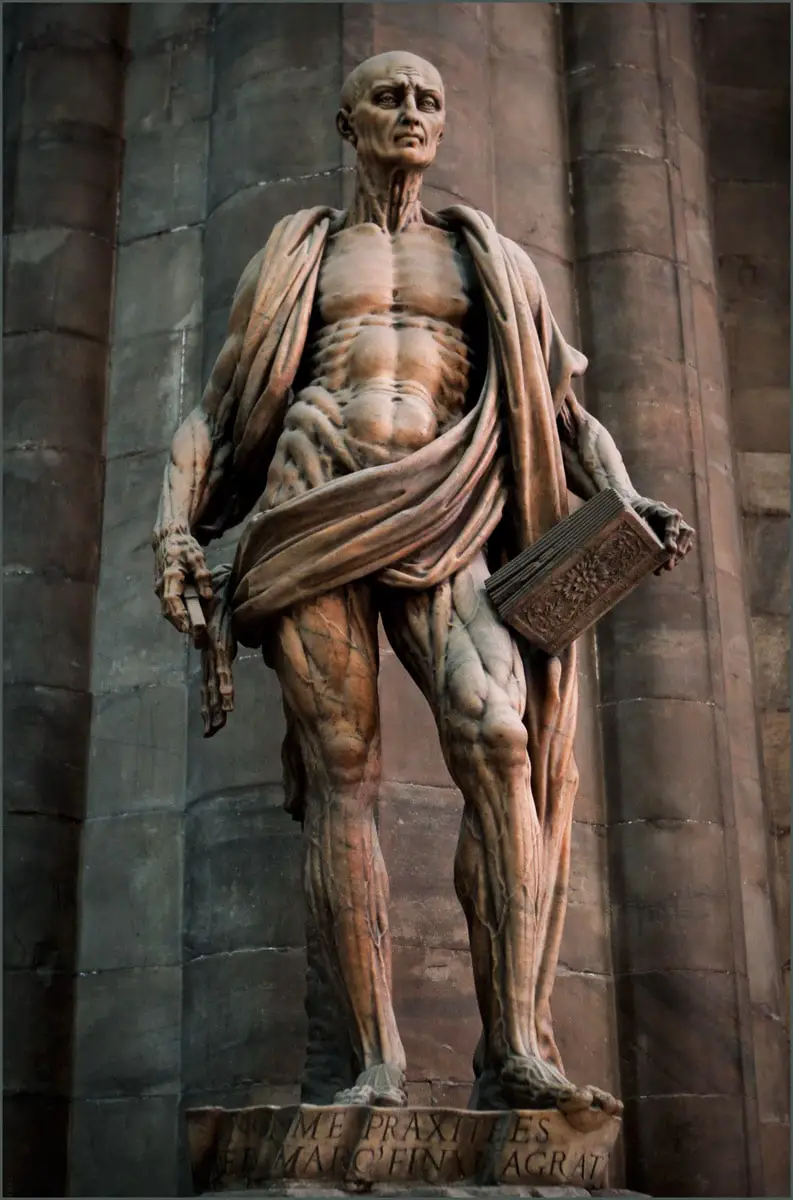
The tallest detail – Madonnina’s spire – was built in 1762. It was designed by Francesco Croce and stands 108.5 m tall. On the top of the spire is a 4.16 m tall statue of Madonnina. According to a tradition, no building in Milan is taller than Madonnina – the tallest skyscrapers in Milan are crowned with small replicas of the statue.
The facade was finished in the times of Napoleon Bonaparte in 1805 – 1813 – he was crowned as a King of Italy in the cathedral in 1805. Architects used the old Gothic design, with some influences of Neo-Gothic style.
Works continued throughout the 19th – 20th century. Cathedral got new, less luxurious stained glass windows in 1829 – 1858, the aging constructions were renovated. The last gate of the cathedral was inaugurated on January 6, 1965. This is considered to be the finish of construction, although some minor works still are waiting to be done.
Nevertheless works at Milan Cathedral are never complete. There is a whole institution, Veneranda Fabbrica del Duomo di Milano, which maintains the cathedral. It was established in 1387 and is busy up to this day with the endless works of restoration. Thus, the facade was renovated in 2003 – 2009, as the beautiful Candoglia marble is easily damaged by air pollution and aging.
The architecture of Milan Cathedral
Exterior
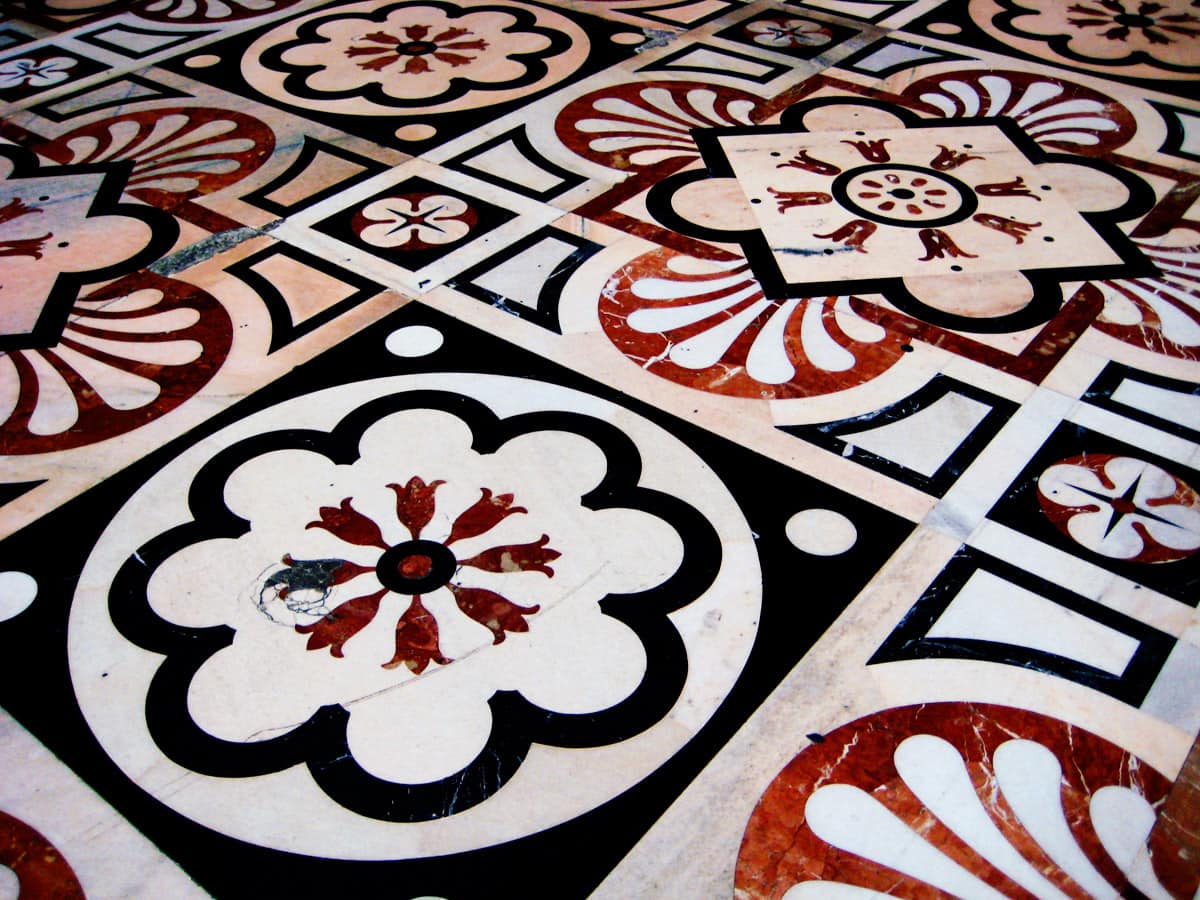
Milan Cathedral is the second-largest Gothic cathedral in the world by volume and area – only Seville Cathedral in Spain is larger.
Cathedral has the highest Gothic vaults (45 m) in the world, except for Beauvais Cathedral (48 m) – which is not completed.
Some more numbers: Milan Cathedral is 158 m long, it has 52 columns. Columns of the nave are 24.5 m high.
135 spires rise above the cathedral, like a marble forest. These pinnacles are linked with flying buttresses, making the scene even more exciting.
Cathedral is adorned with some 3,400 statues. These statues have been made and donated by numerous sculptors, they have been made in numerous styles – starting from the Gothic style and ending up with Art Deco from the 20th century.
The roof of the cathedral can be visited – and few walks are comparable to this. Visitors are marveling at countless sculptures and incredibly thin marble columns high above the city.
Interior
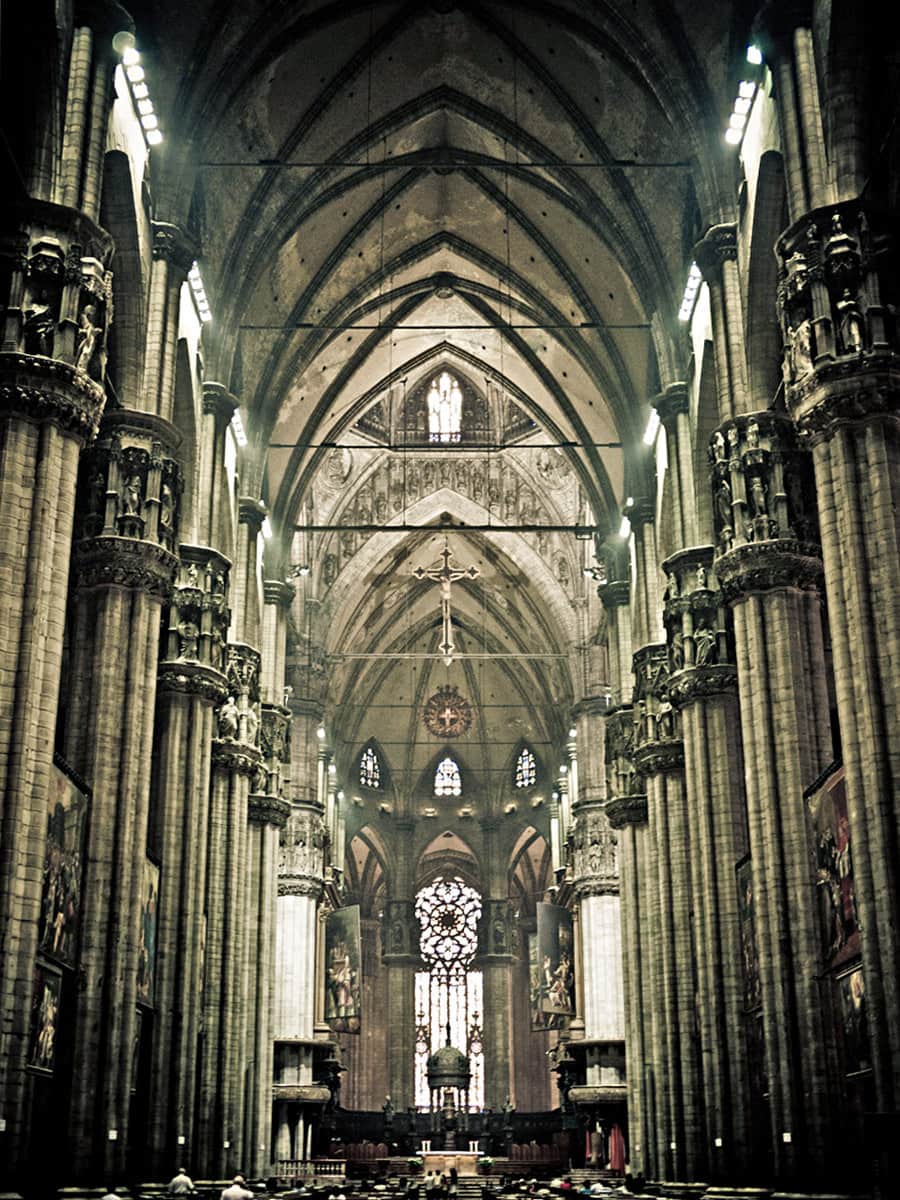
While the exterior of the cathedral is light, ornate, and inspiring, the interior seems to be almost ascetic and rather dark.
The floor in the cathedral was designed by Pellegrino Tibaldi and made in 1584 – 1940. It is made from the white Candoglia marble with Varenna black marble and Arzo red marble.
The giant cathedral holds many values. To the believers most precious is The Holy Nail, reportedly from the True Cross. It hangs over the altar and is illuminated with a red light.
Unusual and highly valued is the statue of St. Bartholomew Flayed, which was made by Marco D’Agrate in 1562. It looks ghostly and at the same time emits weird energy. Cathedral has one of the largest organs in the world, it has a valuable collection of sculptures and paintings.
Reviews and critics
Throughout the long centuries of construction and eternal conflicts between the builders and designers this building has obtained its own style, it is different from any other building in the world. People look at it with awe and admiration, but their verdicts about the architectural qualities are various.
Respected critics of architecture criticized the cathedral, especially in the 19th century. John Ruskin wrote that the cathedral steals “from every style in the world: and every style spoiled… Not a ray of the invention in a single form… Finally, the statues all over are of the worst possible common stonemasons…”.
Also, Oscar Wilde wrote to his mother in 1875: “The Cathedral is an awful failure. Outside the design is monstrous and inartistic. The over-elaborated details stuck high up where no one can see them; everything is vile in it; it is, however, imposing and gigantic as a failure, through its great size and elaborate execution.”.
But Mark Twain wrote in 1867:
“They say that the Cathedral of Milan is second only to St. Peter’s at Rome. I cannot understand how it can be second to anything made by human hands.”
Well, Wondermondo would rather agree with Mark Twain…
References
- Sacred Destinations. Milan Baptistery. Accessed on July 15, 2011
- Duomo di Milano, Architettura in Duomo. Accessed on July 15, 2011
Milan Cathedral is included in the following list:
 Linked articles
Linked articles
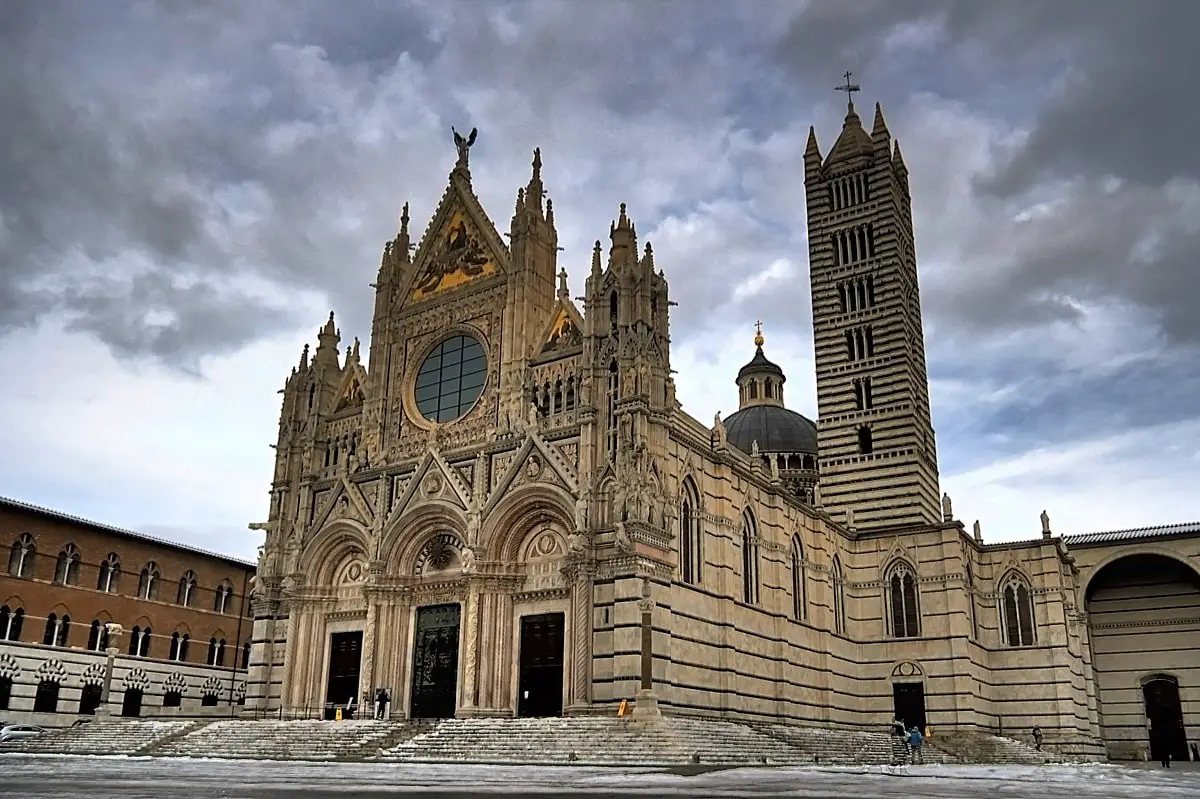
Top 10 most beautiful churches of Italy
This article lists the greatest churches of Italy: the best ones among the hundreds of very interesting buildings. Each of them has unusual and beautiful architecture, great works of art, and with an exciting history that sometimes is 2 thousand years long.
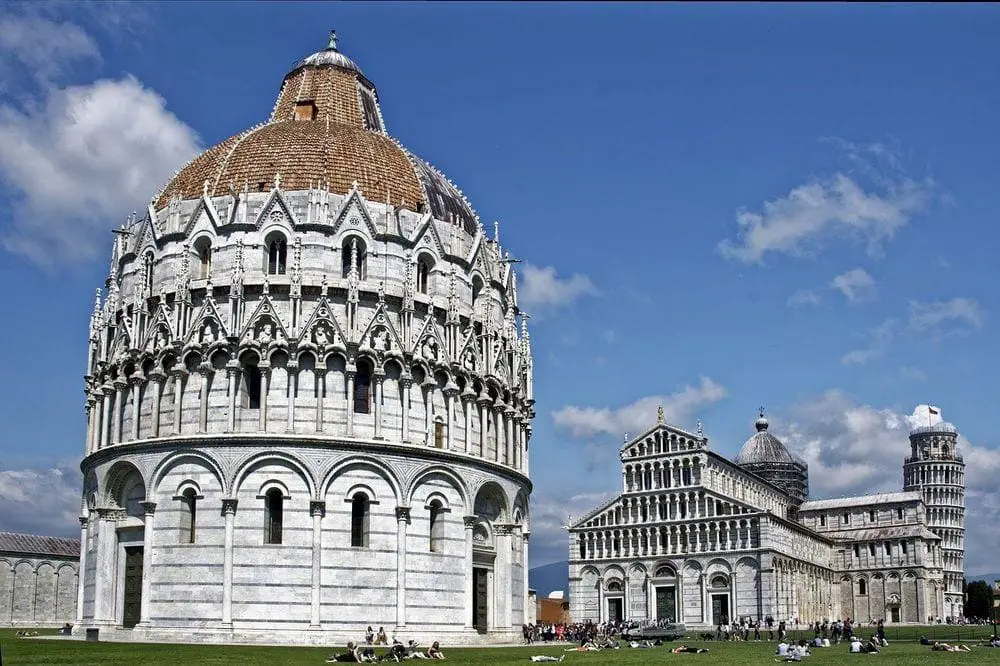
Wonders of Italy
Italy is one of the most popular destinations in the world due to its unsurpassed cultural heritage – this country has got some of the finest monuments of architecture and art in the world.
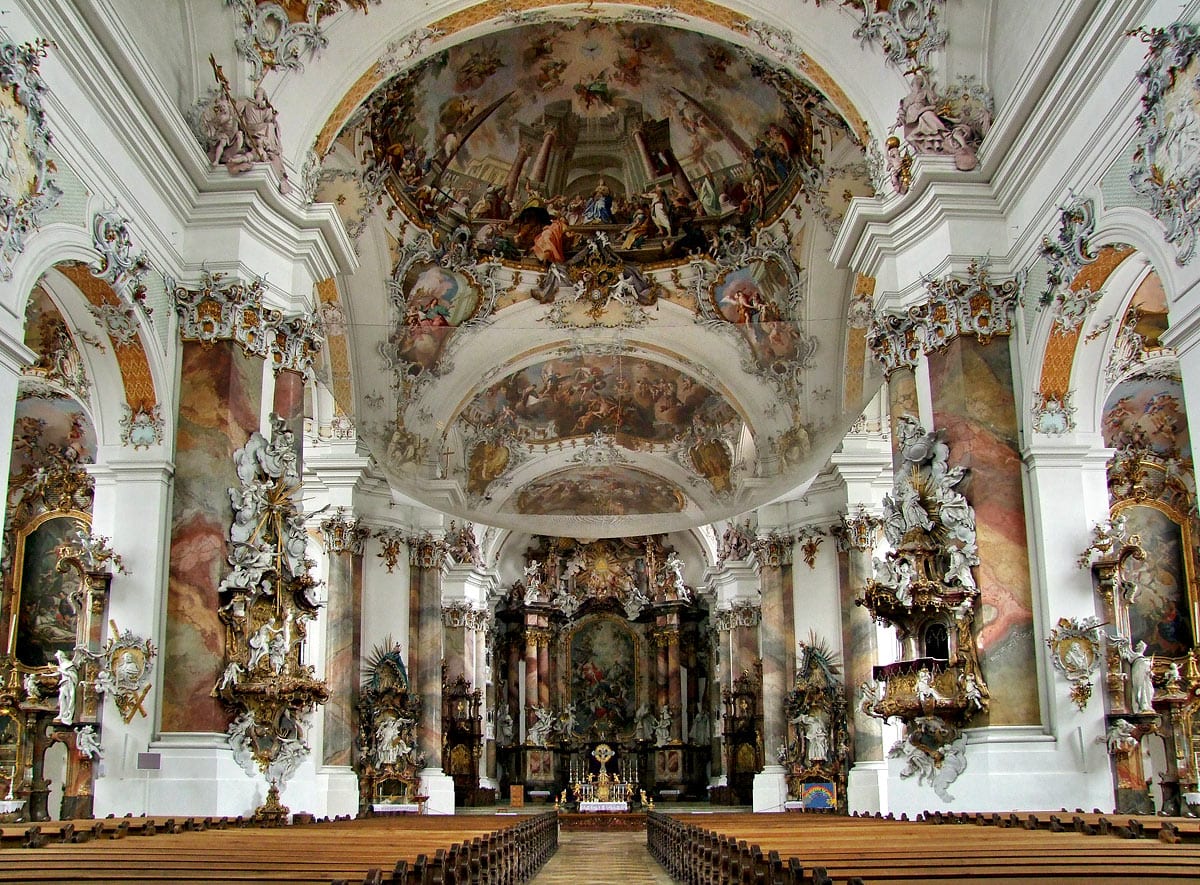
Churches
Throughout the millennia Christian churches have been the epitome of architecture and arts achievements in Western culture.
 Recommended books
Recommended books
Milan & the Lakes
Explore the exciting history, culture, architecture, and fashion of Milan. Discover museums, foods, shops, and more.

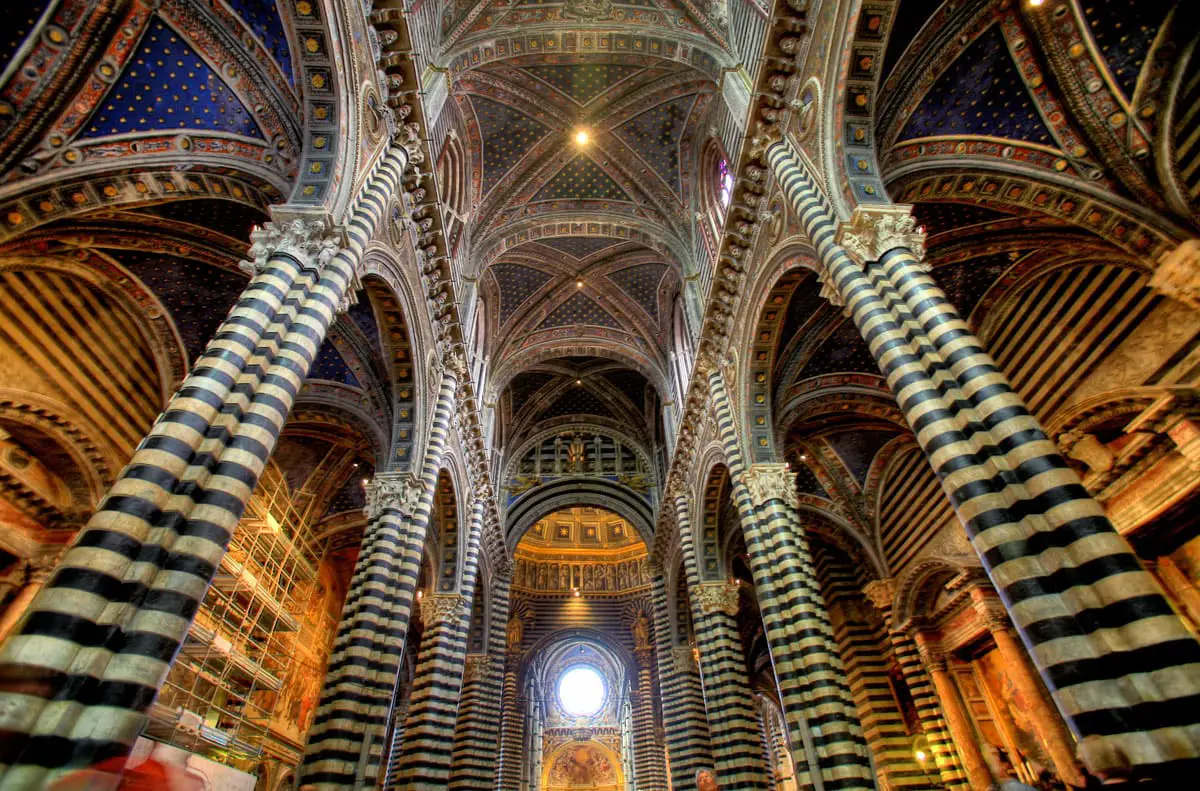


noice